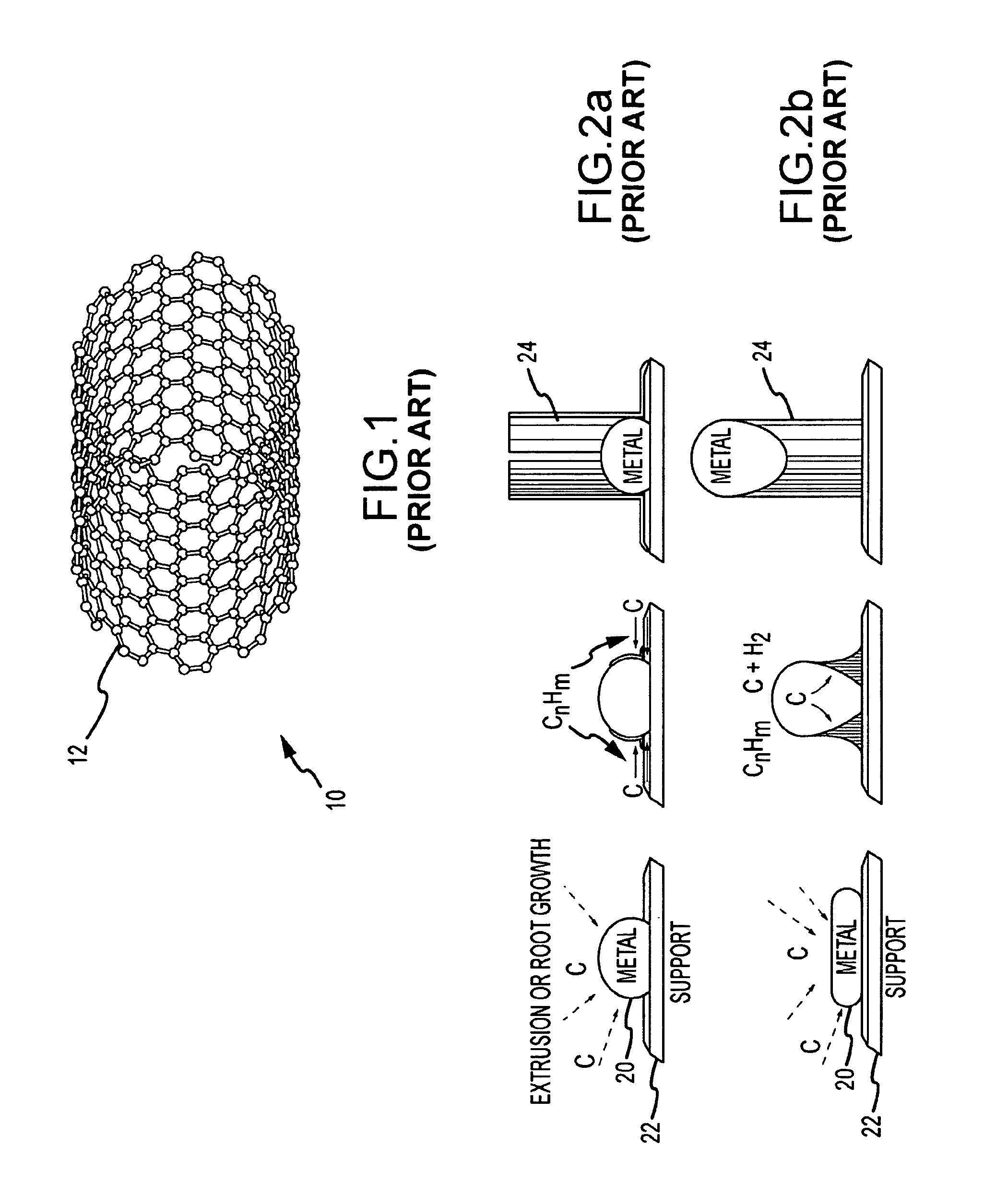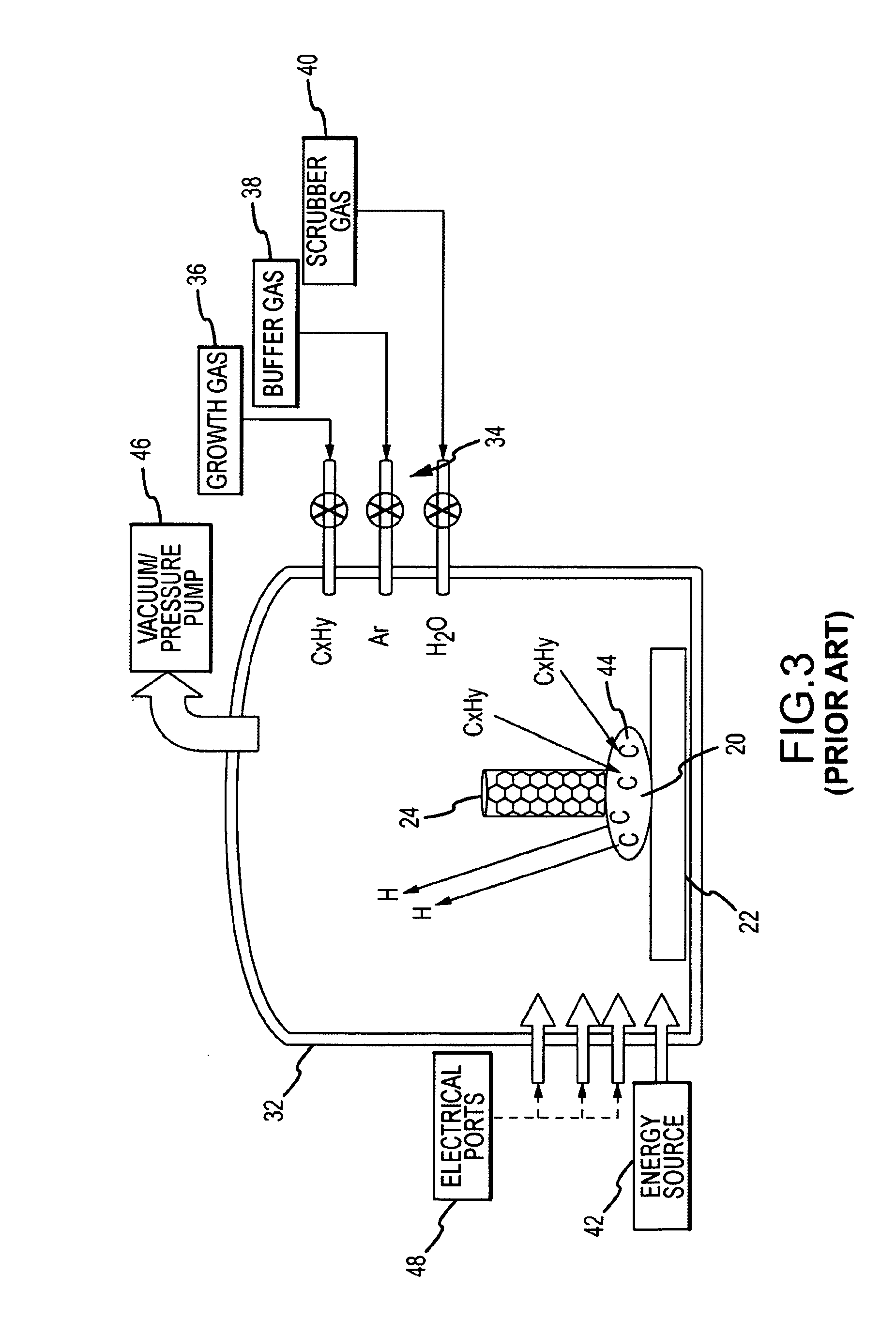System and method for growing nanotubes with a specified isotope composition via ion implantation using a catalytic transmembrane
a technology of ion implantation and nanotubes, which is applied in the field of nanotubes, can solve the problems of not being able to propose a good solution for growing cnts, unable to manufacture a high-purity single pure isotope of carbon e.g. 1, and achieve the effect of avoiding erosion or contamination
- Summary
- Abstract
- Description
- Claims
- Application Information
AI Technical Summary
Benefits of technology
Problems solved by technology
Method used
Image
Examples
case 1
-Isotope or Unique Molecular Combination
[0039]A simple yet very important nanotube structure 120 is that of a pure single-isotope or unique molecular combination of two or more different isotopes as shown in FIG. 6a. These types of nanotube structures may be useful in a wide range of devices including semiconductor, spin transport, or optical pumping devices.
[0040]In an exemplary embodiment, a source 50 emits a primary beam 54 including 12C, 13C and perhaps 14C isotopes of carbon ions. The filter 68 is configured to pass only the desired single isotope, e.g. 12C. In other words, the subset includes only the single 12C isotope. The resulting nanotubes can be grown with a purity of at least 99.9% 12C. A small amount of unintentional contaminants (the blocked isotopes) may pass through or around the filter but the amount is very small.
[0041]Carbon nanotubes are of particular commercial interest. Naturally occurring carbon includes approximately 98.9% 12C, 1% 13C and 10−10% or less 14C....
case 2
m Doping of Single-Isotope or Unique Molecular Combination
[0043]Another important nanotube structure 122 is that of a single isotope or single unique molecular combination of two or more different isotopes uniformly doped with a dopant atom as shown in FIG. 6b. The dopant atoms 124 take the place of element atoms in the lattice. These types of nanotube structures may be useful in semiconductor devices such as diode or transistor designs, or optical pumping devices, such as quantum cascade lasers.
[0044]To provide a continuous uniform doping of, for example, a 12C nanotube, the carbon source 50 might include a dopant molecule having the same weight as the desired element isotope, in which case the dopant molecule will pass through the isotope selection filter. For example, if the selection filter is tuned to pass ions with atomic weight of 12, both 12C ions and 11B1H dopant molecule ions will pass. The 11B1H molecule will break apart when it collides with the catalysts 72 with the B11...
case 3
ive Doping of Single-Isotope or Unique Molecular Combination
[0045]Another important nanotube structure 126 is that of a single-isotope or single unique molecular combination of two or more different isotopes selectively doped with a dopant atom as shown in FIG. 6c. The dopant atoms 128 take the place of element atoms in the lattice in desired zones. These types of nanotube structures may be useful in nanoelectronic and spintronic devices.
[0046]To provide selective doping of, for example, a 12C nanotube, the source 50 emits a primary beam including multiple isotopes 12C, 13C and 14C. The filter directs only the 12C isotope to the membrane. In one embodiment, the secondary ion source 104 emits a primary ion beam including multiple dopant isotopes, e.g. 11B1H and 12B1H directed to the same filter. The 11B1H ions look like 12C ions and are directed towards the substrate where the 11B ions are implanted into the catalyst and form dopant sites in the 12C lattice. The primary beam of dopan...
PUM
| Property | Measurement | Unit |
|---|---|---|
| Fraction | aaaaa | aaaaa |
| Digital information | aaaaa | aaaaa |
| Length | aaaaa | aaaaa |
Abstract
Description
Claims
Application Information
 Login to View More
Login to View More - R&D
- Intellectual Property
- Life Sciences
- Materials
- Tech Scout
- Unparalleled Data Quality
- Higher Quality Content
- 60% Fewer Hallucinations
Browse by: Latest US Patents, China's latest patents, Technical Efficacy Thesaurus, Application Domain, Technology Topic, Popular Technical Reports.
© 2025 PatSnap. All rights reserved.Legal|Privacy policy|Modern Slavery Act Transparency Statement|Sitemap|About US| Contact US: help@patsnap.com



